FIRE VERSUS SEA…
Escoadas lávicas da Ribeira Grande.
[S. Miguel – Azores]
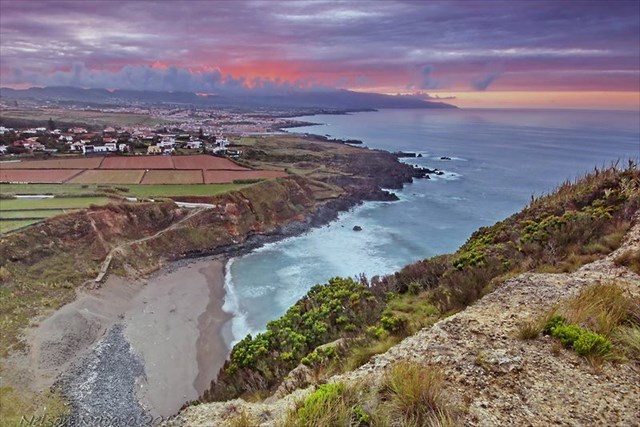
EARTHCACHE

PORTUGUÊS

A origem destes basaltos…
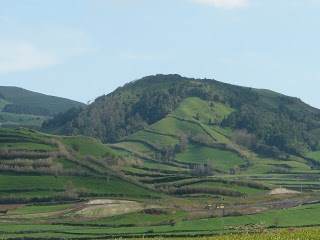
O Pico do Sapateiro, assim chamado "... por em outro tempo ser de um oficial deste ofício" (Gaspar Frutuoso) é hoje conhecido por Pico do Queimado. Este pico formou-se a partir de uma série de vulcões que se verificaram no sul da freguesia da Ribeira Seca da Ribeira Grande em S. Miguel - Açores. Gaspar Frutuoso refere-se à erupção vulcânica de 1563 assim:
"Deste pico (Pico da Barrosa) lavrou o fogo por debaixo do chão e foi dar em outro, que chamam o pico do Sapateiro, que está sobre a Ribeira Grande, da parte do norte, o qual começando a arder a terça-feira, começou depois a correr dele uma ribeira de fogo pela Ribeira Seca abaixo até chegar ao mar, correndo mansamente como metal derretido...".
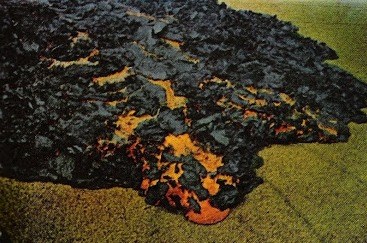
Erupção vulcânica do Pico do Sapateiro, ilha de São Miguel - Quase em simultâneo com a erupção da Lagoa do Fogo, ocorreu uma erupção estromboliana no Pico do Sapateiro, freguesia da Ribeira Seca. Este pico é um doma traquítico localizado sobre uma das falhas do graben da Ribeira Grande, onde até então existia uma lagoa. A erupção emitiu grande volume de lavas, de composição basáltica, muito fluidas, que soterraram parte da Ribeira Seca, incluindo um chafariz que hoje está à vista incrustado na formação rochosa.
A LAVA
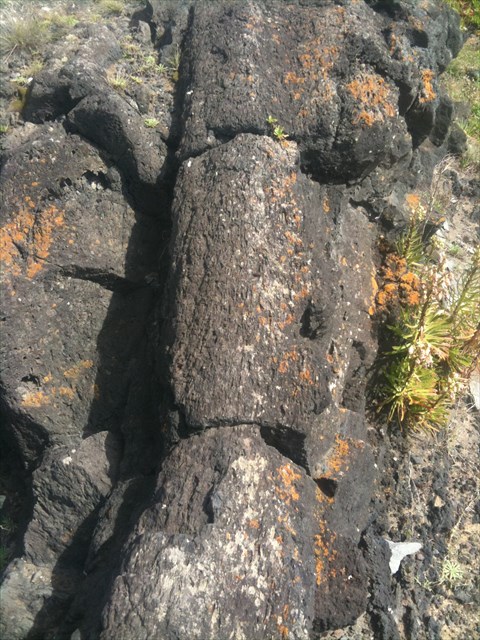
Lava é a designação dada ao material geológico em fusão, com temperatura em geral entre os 600 °C e os 1250 °C, que um vulcão expele durante uma erupção. Embora em função da sua composição e temperatura as lavas possam ter uma viscosidade superior a 100 000 vezes a da água, algumas delas, particularmente as máficas, podem ser bastante fluidas, o que em conjunto com as suas propriedades de tixotropia e depseudoplasticidade permite que as escoadas lávicas criadas pelas erupções efusivas (não explosivas) permaneçam ativas durante períodos longos e cheguem a percorrer mais de uma dezena de quilómetros antes de solidificar. A lava deriva diretamente do magma, o material em fusão que se encontra sob a superfície da Terra, cuja composição reflete, pelo que ao solidificar, depois de desgaseificar e arrefecer, forma escoadas lávicas constituídas pelas correspondentes rochas ígneas extrusivas.
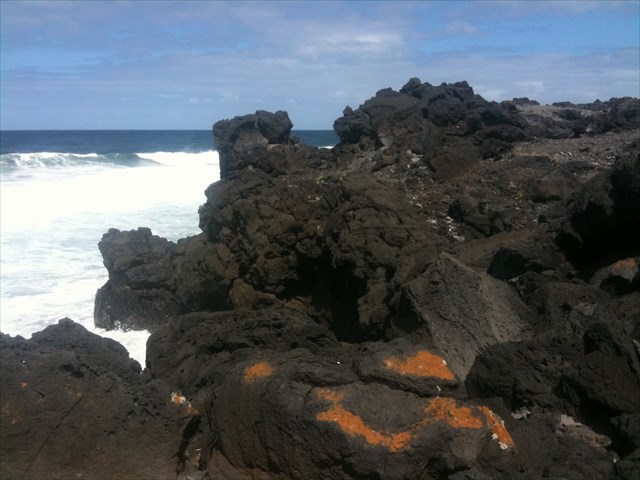
As lavas podem-se distinguir em:
Lava fluida’’’ ou ‘’’lava básica – tem uma temperatura muito elevada, pobre em sílica e em gases. São lavas que se movem muito rapidamente e são características de erupções vulcânicas do tipo efusivo.
Lava intermédia ou mista– é um tipo de lava com características intermédias entre as lavas ácidas e básicas.
Lava Viscosa ou Ácida – lava de baixas temperaturas, rica em sílica e em gases. É uma lava que se move com muita dificuldade e característica de erupções vulcânicas do tipo explosivo

Tipos de Escoadas lávicas
As três principais formas que os fluxos de lava podem tomar são:aaouescoriácea,pãhoehoeouencordoada, epillow lavaoulavas em almofada.
'A'a'
'Aa (do Havaiano a'â, que significa "pedregosa" ou também "queimar" ) ou escoriácea é um dos três tipos básicos de escoadas lávicas. As lavas Aa são caracterizadas pela sua superfície irregular, resultante da perda rápida de gases. É composta por blocos de lava fragmentados designados de clinker.
A superfície de uma escoada lávica Aa é solta, fragmentada e rugosa e serrilhada o que torna difícil caminhar sobre ela. A superfície de clinker cobre um núcleo maciço da escoada que foi a zona mais ativa desta durante o movimento da escoada. À medida que a lava viscosa do núcleo movimenta-se pela encosta o clinker é arrastada à superfície da escoada. Na frente das escoadas do tipo Aa os fragmentos arrefecidos caem em direção à base e são cobertos pela escoada que avança. Isto leva à formação de duas camadas de fragmentos arrefecidos: uma na base e outra no topo da escoada lávica. As lavas do tipo Aa são geralmente mais viscosas do que as do tipo pahoehoe e estas últimas podem formar escoadas Aa se o fluxo de lava se tornar turbulento devido à presença de obstáculos no terreno.
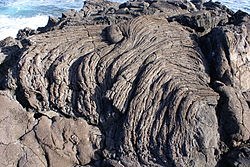
'Pahoehoe'
Pahoehoe (do Havaiano pahoehoe, que significa "macio") ouencordoada são geralmente escoadas de lavas basálticas. A sua superfície é macia e encordoada. As escoadas deste tipo avançam como uma série de pequenos lóbulos e dedos que rompem continuamente a superfície arrefecida. A textura da superfície das escoadas lávicas do tipo pahoehoe é muito variável apresentando várias formas referidas por vezes como esculturas de lava.
'Pillow lava'
Pillow lava(do inglês, que significa "lava em almofada") ou lava em almofada Pillow lava são as escoadas lávicas típicas das erupções vulcânicas submarinas. Esta denominação deve-se à sua secção aproximadamente esférica, semelhante a almofadas. As lavas em almofada formam-se não apenas em mar profundo, mas também quando as lavas subaéreas correm pelas vertentes entrando em contacto com o mar, rios ou lagos. As superfícies vítreas destas lavas não são lisas, apresentam gretas, enrugamentos e estrias lineares muitas das quais se intersectam em ângulos retos. As lavas em almofada podem encontrar-se numa enorme variedade de formas incluindo bolbosas, esféricas, achatadas, alongadas e tubulares, e variam em diâmetro de várias dezenas de centímetros a várias dezenas de metros, contudo, o seu tamanho típico varia entre 0,5 e 1 metro. O interior das lavas em almofada arrefece mais lentamente que a cobertura exterior vítrea e consequentemente é mais cristalino. A cristalização a taxas de arrefecimento progressivamente mais lentas em direção ao interior produz uma considerável variedade de texturas nas rochas.
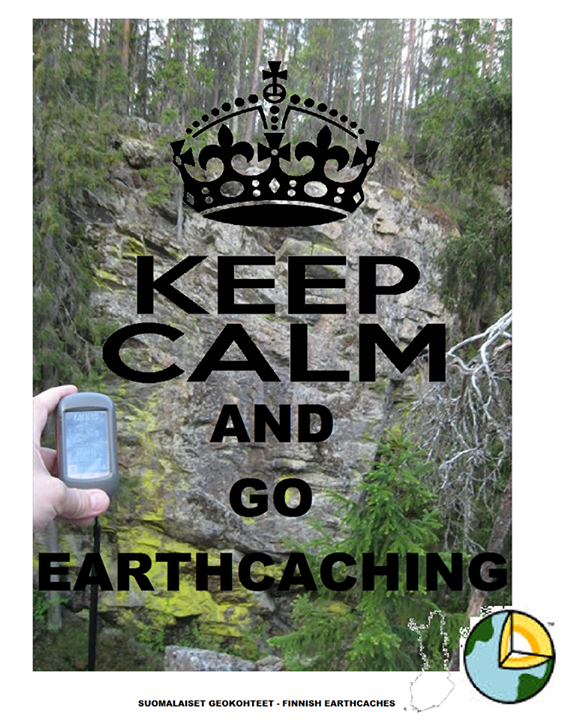
PARA REALIZAR E REGISTAR ESTA EARTHCACHE:
PERGUNTAS:
Para “encontrar/registar” esta cache deverá: provar que esteve no local e responder às seguintes questões, enviando um email, no prazo de sete dias, com as respostas para o nosso perfil:
1.
Responde às seguintes questões:
a)
Explica, por palavras tuas, o que é lava.
b)
Quais são as três principais formas que uma escoada lávica pode tomar?
c)
Caracteriza a origem das lavas existentes no local (nome do fenómeno; ano, tipo de material).
2.
Observando a zona do WP1 (ponto de observação), responde às seguintes questões:
a)
Qual te parece ser o tipo de escoada lávica, presente no local?
b)
Classifica quanto à cor, granulometria e textura as rochas presentes neste local.
c)
As “chaminés” existentes no local são constituídas de que tipo de material?
d)
Estas “chaminés” são de origem humana ou natural?
3.
Neste local (GZ), as escoadas lávicas encontram-se com uma forma/aspeto: desmanchada/partida/desconjuntada!
Explica uma possível razão para este fato.
4. TAREFA OBRIGATÓRIA:Deverá tirar uma foto sua, onde você apareça (ou com um papel/placa onde conste o seu nickname e a data da visita) e que comprove a sua presença no GZ desta EC - NÃO META SPOILERS. Esta foto deverá ser colocada no seu registo ou enviada por email ou sistema de mensagens de Geocaching, para o owner!

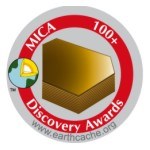
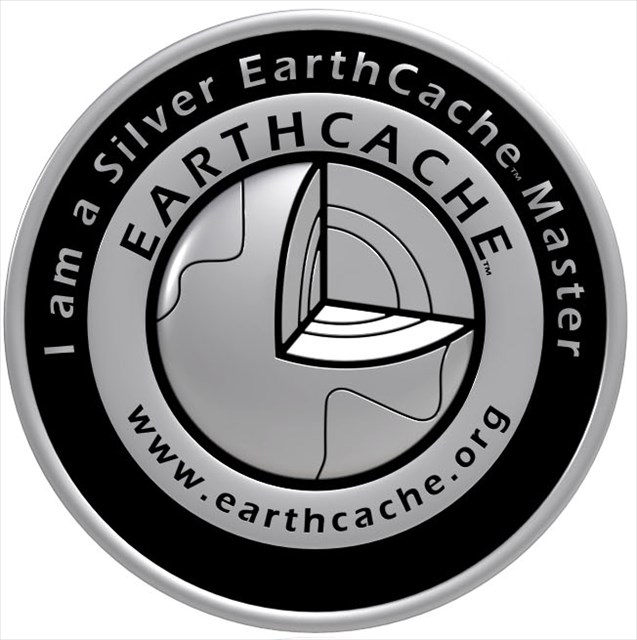

FIRE VERSUS SEA…
Lava flows of Ribeira Grande.
[S. Miguel - Azores]
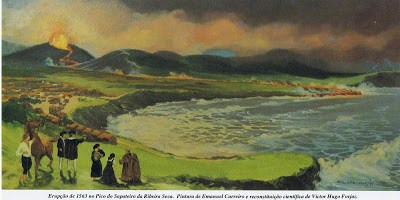
ENGLISH

EARTHCACHE

The origin of this basalt ...
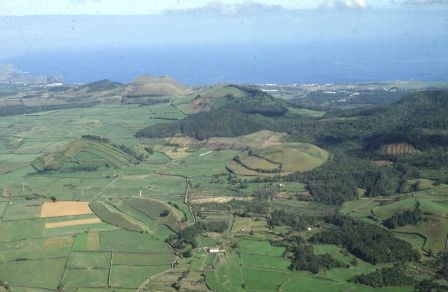
The Pico Shoemaker, named "... for another time be an officer of this office" (Gaspar Fruitful) is now known as the Burnt Peak. This peak was formed from a series of volcanoes that have occurred in the southern parish of Ribeira Seca Ribeira Grande on São Miguel - Azores. Gaspar Fruitful refers to the volcanic eruption of 1563 as follows:
"This peak (Pico da Barrosa) drew up the fire under the floor and went for another, which they call the peak Shoemaker, who is on the Ribeira Grande, the northern part, which starting on fire Tuesday, It began after running it a fiery stream by Ribeira Seca below to reach the sea, running quietly as molten metal ... ".
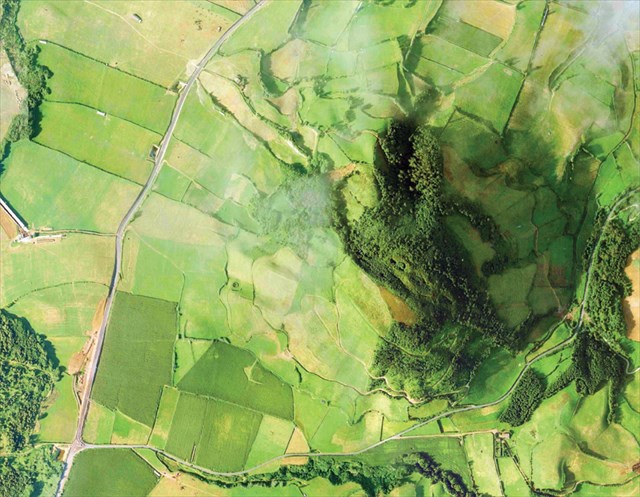
Volcanic eruption of the Pico Shoemaker, São Miguel Island- Almost simultaneously with the eruption of Lagoa do Fogo, there was a strombolian eruption in Pico Shoemaker, Ribeira Seca parish. This peak is a gentle traquítico located on one of the graben faults of Ribeira Grande, where previously there was a pond. The eruption sent large volumes of lava of basaltic composition, very fluid, that buried part of Ribeira Seca, including a fountain that today is the embedded view in the rock formation.
The LAVA
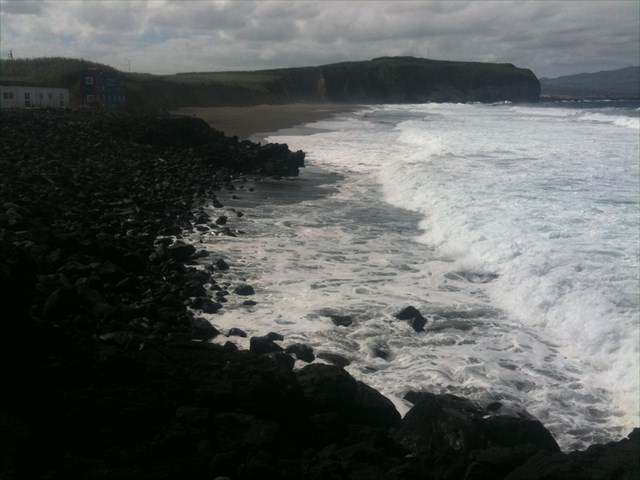
Washing is the designation given to the biological material melt, at a temperature generally between 600 ° C and 1250 ° C, which expels a volcano during an eruption. Though depending on its composition and temperature of the lava may have a viscosity of 100 000 times that of water, some, particularly mafic can be quite fluid, which together with its properties of thixotropy and depseudoplasticidade allows lava flows created by effusive eruptions (non-explosive) remain active for long periods and reach to go more than a dozen kilometers before solidifying. The lava is derived directly from magma, the molten material that lies under the surface of the Earth, whose composition reflects, so to solidify, after degassing and cooling, lava flows form established by the corresponding extrusive igneous rocks.
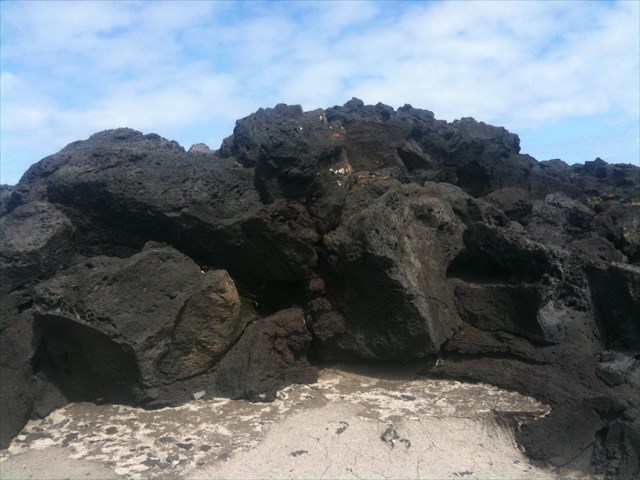
Types of lava
The larvae may be distinguished in:
Wash fluid '' 'and' 'basic washer - has a very high temperature on silica and poor in gas. Lavas are moving very quickly and are characteristic of volcanic eruptions effusive type.
intermediate or mixed lava - is a type of lava with characteristics intermediate between acidic and basic lavas.
Viscous lava or Acid - lava low temperatures, rich in silica and gases. It is a lava that moves with difficulty and characteristics of volcanic eruptions of the explosive type
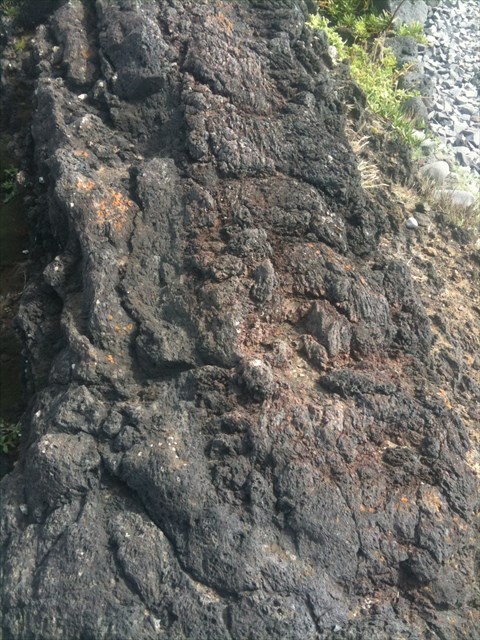
Lava flows types
The three main ways that the lava flows can take are: yy or escoriaceous, pahoehoe or corded, and pillow lavaou pillow lava.
'A'a'
'Aa (the Hawaiian pa, meaning "stony" or also "burn") or escoriaceous is one of three basic types of lava flows. Aa lavas are characterized by their uneven surface resulting from rapid loss of gas. It consists of fragmented lava blocks called clinker.
The surface of a lava drained Aa is loose, fragmented and rough and serrated making it difficult to walk on it. The clinker surface covers a solid core disposed which was the most active zone of this during the movement of the drained. As the viscous core washes moves the slope clinker is drawn to the surface of drained. In front of Aa type disposed the cooled fragments fall toward the bottom and are covered by drained advancing. This leads to the formation of two layers of cooled fragments: one at the base and one on top of lava drained. The lavas of Aa type are generally more viscous than pahoehoe type and the latter can form Aa drained the lava flow becomes turbulent due to the presence of obstacles on the ground.
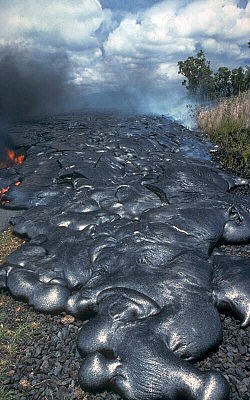
'Pahoehoe'
Pahoehoe (the Hawaiian pahoehoe, meaning "soft") or corded are usually disposed of basaltic lavas. Its surface is soft and strung. The disposed such as advance a series of small lobes and toes that continuously break the cooled surface. The texture of the surface of the lava flows of pahoehoe type is very variable presenting various forms referred to sometimes as lava sculptures.
'Pillow lava'
Pillow lava (English, that means "lava pad") or lava cushion pillow lava are the typical lava flows of submarine volcanic eruptions. This name is due to its roughly spherical section, similar to cushions. The pillow lava are formed not only in the deep sea, but also when the subaerial lava run through the strands into contact with the sea, rivers or lakes. The vitreous surfaces such smooth lava are not present cracks, wrinkles and linear striations many of which intersect at right angles. The pillow lava can be in a wide variety of forms including bulbous, spherical, flat, elongated and tubular, and vary in diameter from several tens centimeters to several tens of meters, however, its typical size ranges from 0.5 and 1 meter. The interior of the pillow lava cools more slowly than the glass external cover and, consequently, is more crystalline. Crystallization progressively slower cooling rates inward produces a considerable variety of textures in the rocks.
TO PERFORM AND LOG THIS EarthCache:
QUESTIONS:
To "find / register" this cache must: prove that visited the site and answer the following questions by sending an email within seven days, with the answers to our profile:
1. Answer the following questions:
a) Explain, in your words, what is lava.
b) What are the three main ways that a lava drained can take?
c) characterized the origin of the existing lava on site
(name phenomenon, year, type of material).
2. Observing the area of WP1 (observation point), answer the following questions:
a) What do you think is the kind of lava drained, on site?
b) Sorts in color, grain size and texture of the rocks
present at this location.
c) The "chimneys" are on site consist of that kind of stuff?
d) These "chimneys" are human or natural origin?
3. At this location (GZ), the lava flows are with a form / aspect: dismantled / departure / disjointed! Explains one possible reason for this fact.
4. TASK (not optional): You must take a picture of yourself, where do you show up, (or with a paper / plaque with your geocaching nickname and the date of the visit) and that proves your presence in the GZ of this EC - no spoilers please. This photo must be placed in your log or sent by email or Geocaching messaging system, to the owner!



